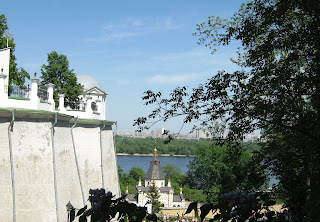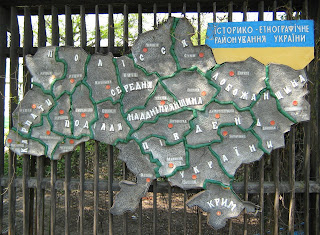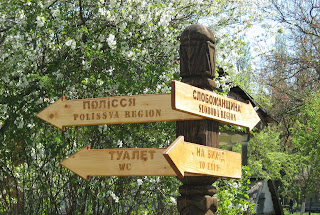Ah sinful nation, a people laden with iniquity, a seed of evildoers, children that are corrupters: they have forsaken the LORD, they have provoked the Holy One of Israel unto anger, they are gone away backward. Why should ye be stricken any more? ye will revolt more and more: the whole head is sick, and the whole heart faint. From the sole of the foot even unto the head there is no soundness in it; but wounds, and bruises, and putrifying sores: they have not been closed, neither bound up, neither mollified with ointment. Your country is desolate, your cities are burned with fire: your land, strangers devour it in your presence, and it is desolate, as overthrown by strangers. And the daughter of Zion is left as a cottage in a vineyard, as a lodge in a garden of cucumbers, as a besieged city. Except the LORD of hosts had left unto us a very small remnant, we should have been as Sodom, and we should have been like unto Gomorrah. Hear the word of the LORD, ye rulers of Sodom; give ear unto the law of our God, ye people of Gomorrah ... (1:4-10)
"Wash you, make you clean; put away the evil of your doings from before mine eyes; cease to do evil; learn to do well; seek judgment, relieve the oppressed, judge the fatherless, plead for the widow. Come now and let us reason together," saith the LORD: "though your sins be as scarlet, they shall be as white as snow; though they be red like crimson, they shall be as wool. If ye be willing and obedient, ye shall eat the good of the land: but if ye refuse and rebel, ye shall be devoured with the sword:" for the mouth of the LORD hath spoken it. (1:16-20)
~ ~ ~ ~ ~ ~ ~ ~ ~ ~ ~ ~ ~ ~ ~ ~ ~ ~ ~ ~
Yesterday I watched a particularly interesting episode of a British television show called "GRAND DESIGNS," which features ordinary British people on a quest to restore, to its original grandeur and even more, an historic old building that is currently derelict, decrepit and desolate because of years of neglect. Here's a few pics:
This real-life restoration project gave me a visual illustration of what God was saying to the Israelites through the prophet Isaiah, and I want to share that with you.
1. We live in a "sinful nation," among a people "laden with iniquity" who have "forsaken the LORD" and "are gone away backward." It was somewhat surprising to me how so many people in the community loved the historicity of the old church in Ireland, but over 100 years there had been no one who was willing to work at fixing or maintaining it. It would have been a lot easier to fix the problems had the work begun years earlier. Yet, how much more saddening it is to realize that so many people have simply forsaken God and let their spiritual lives go to rot. We must be careful not to think that this cannot happen to us -- and if in some area we discover that we have forsaken what we know God wants for us, then we must deal with that before it becomes a monumental desolation in our spiritual lives.
2. A solid foundation (soundness) is crucial, but the structure will fall apart if the rest of it is not cared for properly. Since this is true for a building, how much more so is this true for us spiritually, since we are "the temple of the Holy Spirit and the Spirit of God dwelleth in [us]?" (1 Corinthians 3:16) There was soundness in the stone used to construct the old church building in Ireland, but it definitely looked bruised and sore, and there were gaps and holes that had not been closed up or tended to. Storms of trial and temptation sweep through our lives, and there will be circumstances that cause sores, bruises and wounds, even though our faith is founded on the solid truth of God's Word and His love for us. These wounds must be "bound up" and "mollified with ointment" so that they can heal -- so that our faith does not fall apart like an abandoned building that has been beaten by the storms of life.
3. If one finds him/herself in this state, what are we to do then? Isaiah 1:16-20 has the answer. God invites us to "come and reason with Him," and He tells us that if we wash and cleanse ourselves (repentance) and cease from doing evil, that He will cleanse us from our sins -- "though they be red like crimson, they shall be as wool." And I love verse 19: "If ye be willing and obedient, ye shall eat the good of the land." The cleansing and preparation of the old, decrepit church took much time and hard work -- especially the repairing of the massive amount of stonework -- but in order to transform it into a grand and beautiful building again, the cleansing and repair was required. So it is in our spiritual lives ... if we desire to be a beautiful "temple" and to reflect the character of our God who lives within us, we must put in the time and effort required for repentance and cleansing, so that God can do His purifying and rebuilding work.
And when we do this - when we 1) acknowledge our sins, 2) allow God to bind up and heal our wounds, and 3) repent and submit ourselves willingly and obediently to His restorative work - then we will eat the good of the land.
As we carefully maintain our outward appearance, even more so we must care for our spiritual condition so that we will be fit to reflect and display the glory of the One who has saved us and dwells within, because God has a GRAND DESIGN for us:
As we carefully maintain our outward appearance, even more so we must care for our spiritual condition so that we will be fit to reflect and display the glory of the One who has saved us and dwells within, because God has a GRAND DESIGN for us:
- We are chosen and predestined in love to be His children, pure and holy in His sight, to the praise of His glory and grace. (Ephesians 1:4-12)
- We are saved by His grace, reconciled through the cross, made fellow-citizens with the household of God; to be built as a holy temple to the Lord, with a firm foundation of faith and Jesus Christ as the cornerstone, a habitation of God through His Holy Spirit. (Ephesians 2:4-22)
May we, as Christ's church, continually strengthen our foundation in the Word of God, stay committed to His work of sanctification in us through the Holy Spirit, and seek His will in our lives so that we will be a reflection of His glory, a beautiful dwelling-place for the one true God and a testament to everyone around us of the marvelous love and grace that redeems sinners and reconciles them to Himself.




















































